Evergreen shrubs keep their leaves all year round, making them an essential ingredient in any garden. They’re an especially welcome sight in winter, when their foliage and distinctive shapes stop the garden looking bare and help screen unwanted views.
Often described as the ‘backbone’ of a garden, they act as a foil to more showy plants, such as summer-flowering perennials or other plants that have lovely autumn colour. They also give structure to a planting scheme, especially those that can be clipped into balls, mounds, columns, and pyramids.
Not all evergreen shrubs have green leaves – many have foliage coming in other shades, from golden yellows, silver greys, purples and reds and variegated combinations. A lot of shrubs also provide distinctive flowers, mainly from early spring to early summer, after which they hand over to perennials to continue the show.
It’s a good idea to space evergreens out evenly throughout the garden, so that they unify the whole space. Having the ability to soften hard edges of buildings and fences, they become useful as permanent ‘foundation planting’.
Some lend themselves to hedging and screening and can be used to create private areas or garden rooms. Larger leaved and denser leaved varieties also make good windbreaks. Some can also be used as ground cover, lending themselves to tricky situations such as banks and slopes. Lastly, many dwarfing shrubs are coming to market allowing them to be grown in pots and troughs, either on their own or planted with other seasonal bedding plants.
With such a huge amount of choice available, here’s our top six shrubs to help you get your garden started.
Camellia
Camellias are one of the most popular spring-flowering shrubs, providing a vivid splash of colour when little else is in bloom.
Naturally occurring from the Himalayas to Japan and Indonesia, they are natives of deciduous woodland. The number of different types are often debated but it’s understood that there are up to 300 species, with around 3,000 cultivated hybrids.
Although they need acid soil, they are easy to grow in containers of ericaceous (acidic) potting compost, making them ideal for any garden. Collected rainwater is ideal for watering but they can survive on tap water for a month or two in summer.
Feed them from spring to early summer with a slow-release feed formulated for acid-loving plants and they'll keep rewarding you year on year.
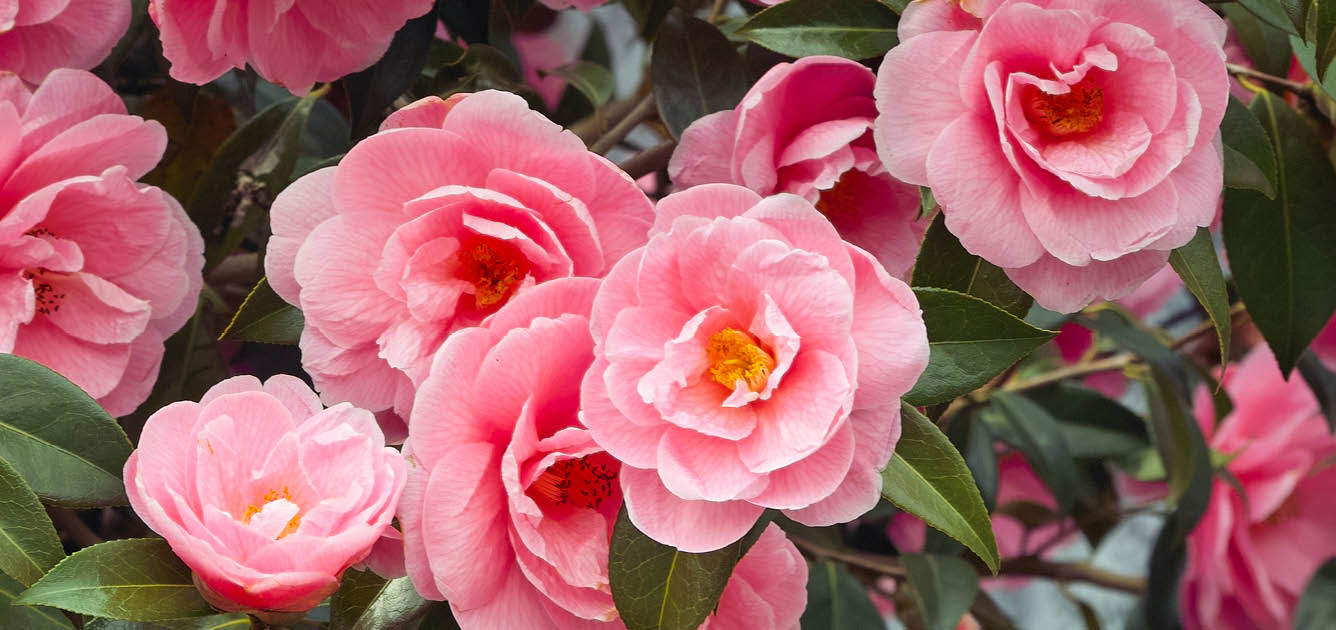
Camellias provide a vivid splash of colour when little else is in bloom.
Hebe
Hebes are versatile evergreen shrubs, with flowers that are attractive to butterflies.
Originating from New Zealand, they range in size from dwarf shrubs to small trees. With decorative leaves, the flowers appear throughout summer and autumn in shades of blue, pink, purple or white.
Easy to grow, Hebes cope well with most soil types and their ability to withstand salt-laden winds makes them especially suited to coastal areas.
Once established Hebe do not require a lot of care. Apply a fertiliser once a year in late winter or early spring before new growth starts. Dead heading of old flowers can extend the flowering period and encourage more flowers later in the year.
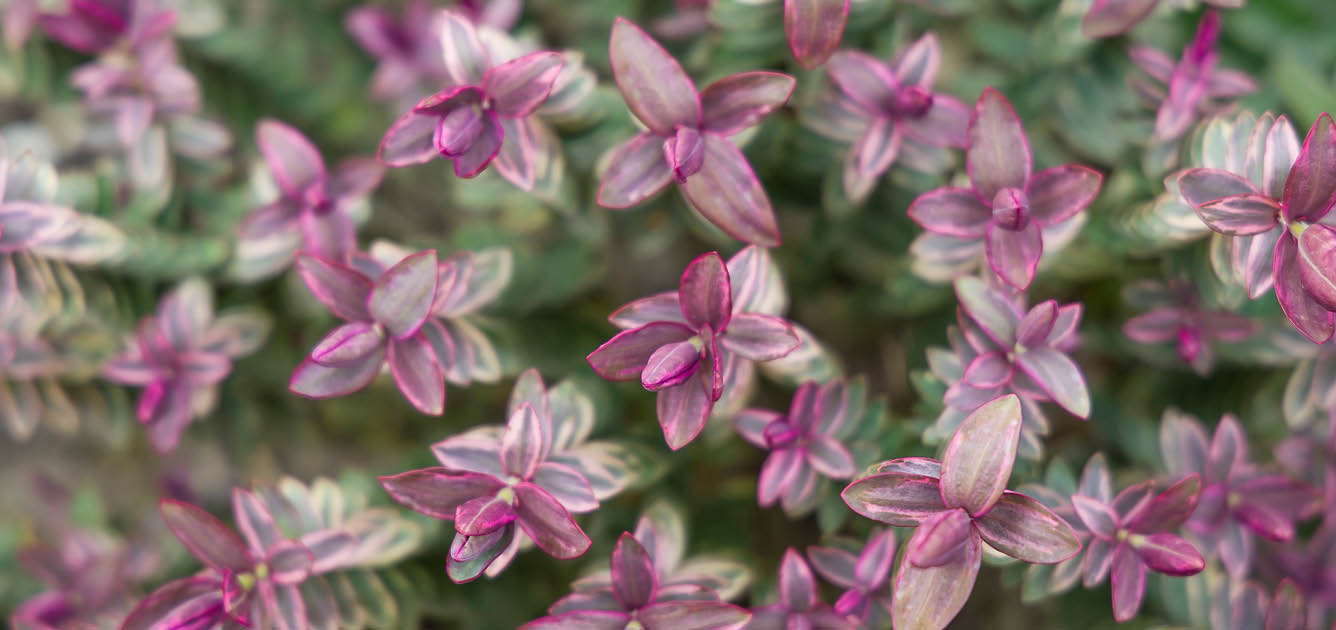
Easy to grow, Hebes cope well with most soil types.
Photinia
Photinia is a popular evergreen grown for its glossy, young red foliage, and large, rounded heads of ivory flowers from late spring.
It can cope with hard pruning making it ideal for informal hedging, although it makes a handsome background shrub in partial shade, too.
The leaves colour up best in full sun and for added interest, look out for the varieties that have a cream mottling on their leaves, such as the cultivar, 'Pink Marble'.
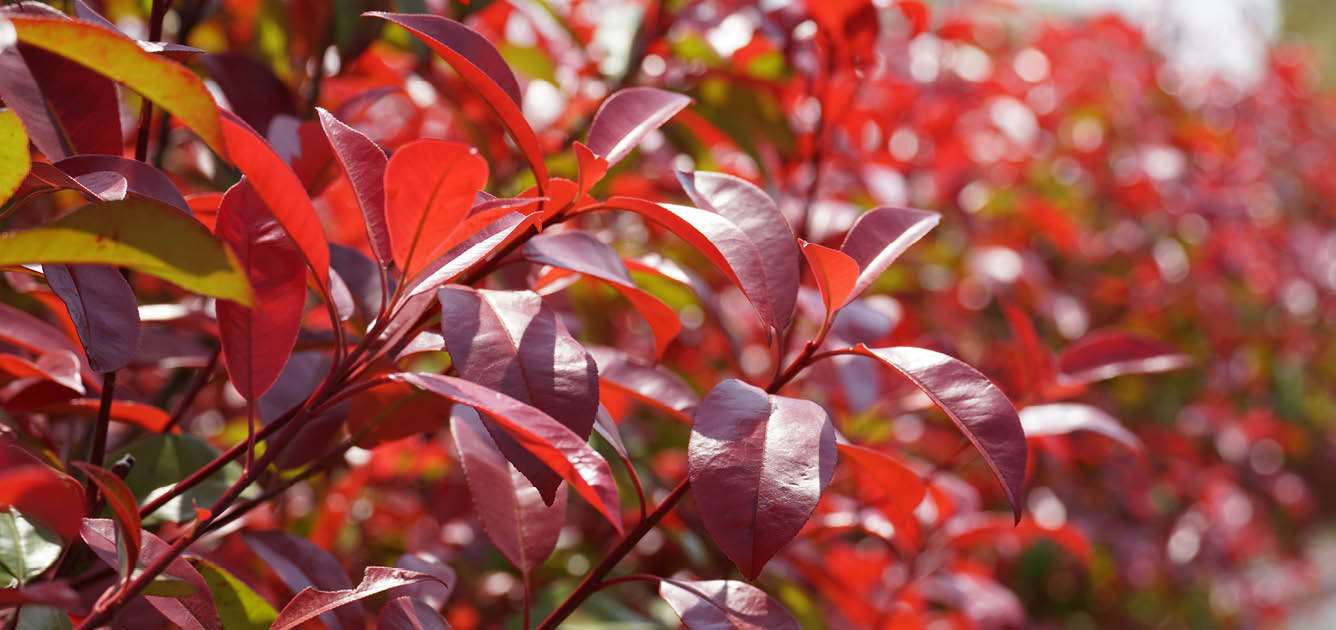
Grown for its glossy, young red foliage, and large, rounded heads of ivory flowers from late spring.
Ceanothus
With its abundant blue flowers, the Californian Lilac is a wonderful evergreen shrub for a sheltered, sunny position.
Officially known as 'Ceanothus', they are native to North America, especially the state of California, where it's said that the native varieties can set seed that can lay dormant for a hundred years, awaiting a forest fire to trigger germination.
The species is quite diverse in its habit, with varieties that lend themselves for different uses within the garden. For upright specimens we recommend 'Concha', 'Puget Blue' and 'Skylark' whilst 'Trewithen Blue' is also good for hedging. For groundcover, try 'Yankee Point' or 'Repens'. For smaller gardens 'Blue Mound' makes a perfect addition.
For something unusual, a couple of good, variegated cultivars exist. 'Lemon and Lime' has a pale-yellow leaf with a dark green splash whilst 'Silver Surprise' is a dark green leaf fringed in cream.
Flowering from late spring into early summer, they are mostly recognised for their abundance of blue flowers, but white and pink varieties also exist. The flowers are a great source of food for bees, so it's best to do any light pruning after flowering.
With their abundant colourful flowers, we think Ceanothus is a great shrub for any garden.
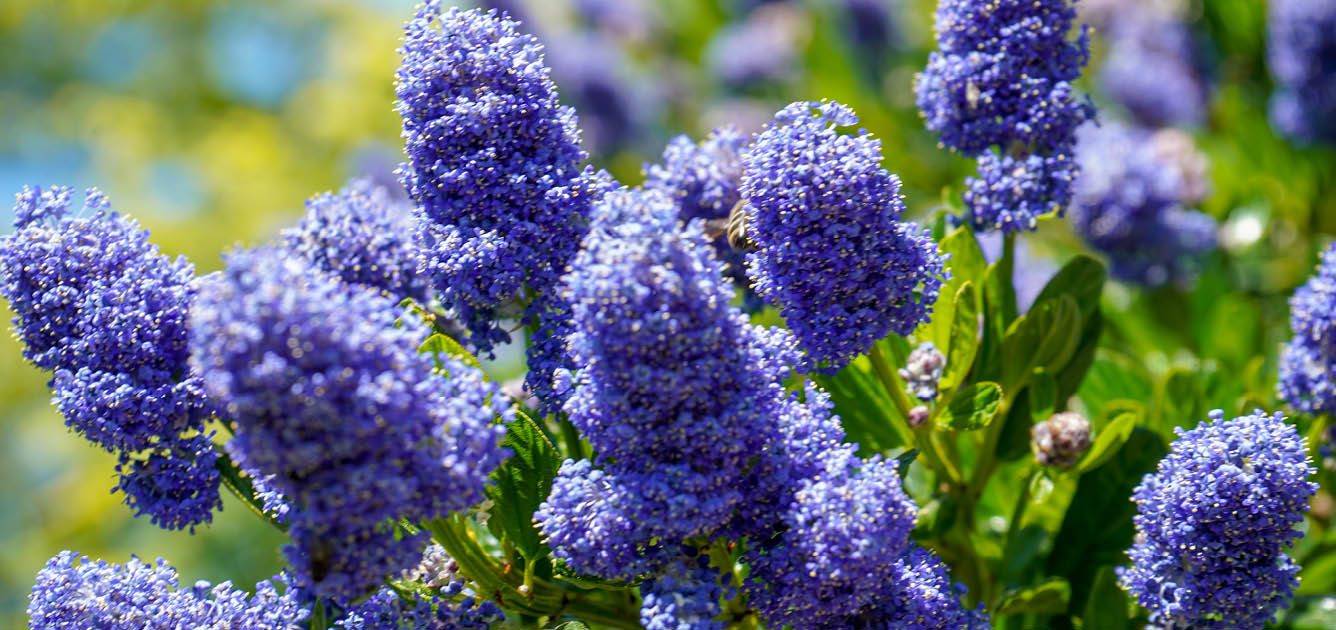
Flowering from late spring into early summer, they are mostly recognised for their abundance of blue flowers, but white and pink varieties also exist.
Choisya
Choisya is an attractive, low maintenance evergreen shrub, known for its glossy green or golden-yellow leaves.
White, scented, star-shaped flowers appear in spring, providing the appropriate common name of Mexican orange blossom. Whilst preferring a sunny sheltered spot, the golden leaved varieties perform slightly better in dappled shade.
With its glorious orange scent and unusually shaped leaves, this shrub makes an excellent addition to borders where they work well with early perennials and spring bulbs that flower at the same time, such as tulips and late daffodils.
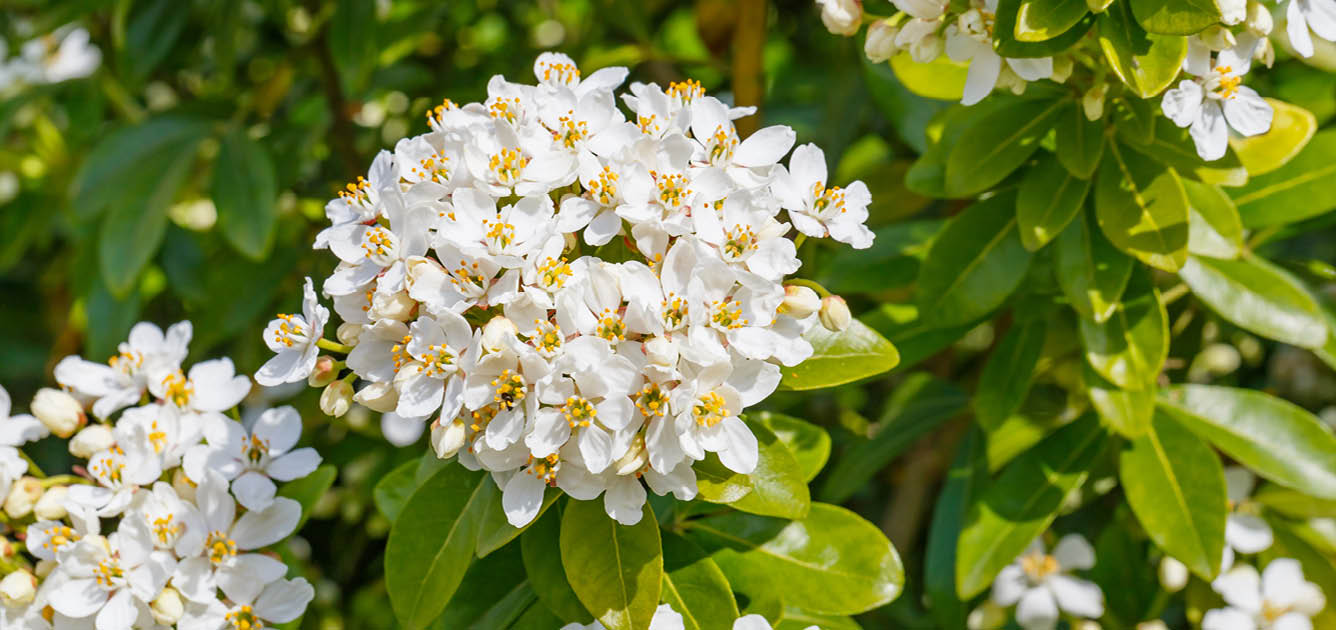
With its glorious orange scent and unusually shaped leaves, Choisyas make an excellent addition to borders where they work well with early perennials and spring bulbs that flower at the same time.
Pittosporum
Another staple shrub originating from New Zealand, Pittosporums are versatile evergreen shrubs that are grown for their neat, attractive foliage. They come in various sizes, from large and conical to compact and domed.
All have shiny, often variegated or colourful leaves, that range from dark to apple green or silver-green or purple-black, depending on the variety. They also have inconspicuous but highly scented flowers in May and June.
They are a good choice for a sheltered sunny spot in mild areas or seaside gardens, where they perform at their best in a well-drained soil.
These shrubs make a good candidate for an alternative hedge as they respond well to light clipping. For taller hedges, explore the varieties of Pittosporum tenuifolium, whilst for lower hedging that can act as a Buxus alternative, check out the glossy green ‘Golf Ball’ or dark purple ‘Tom Thumb’. All Pittosporums are tip growing, so any shaping needs to be done regularly.
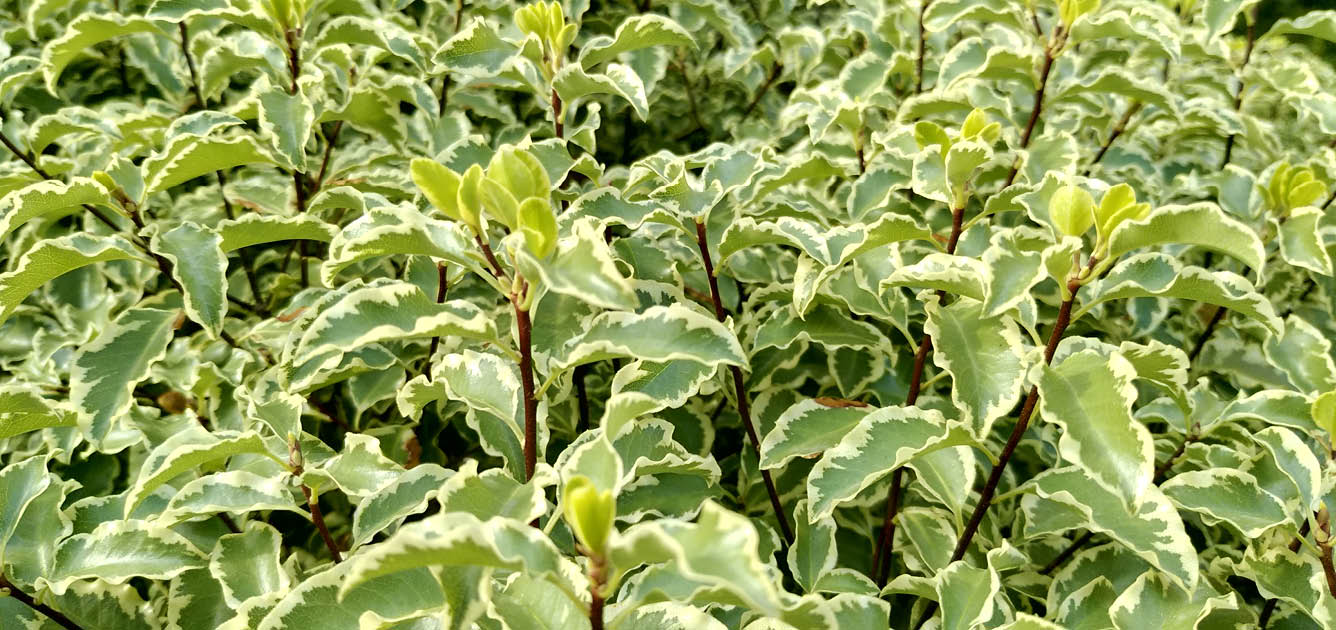
All Pittosporums have shiny, often variegated or colourful leaves, that range from dark to apple green or silver-green or purple-black, depending on the variety.



